Anyone who watched TV between 1967 and '99 will remember the iconic 'Test Card', the image broadcast on BBC Tv at times when no programmes were being broadcast.
The BBC had several test cards, all of the same design, but it is Test Card F which was broadcast the most often. It featured the famous image of a young girl playing noughts and crosses on a blackboard with her clown doll, surrounded by geometrical greyscale patterns and with colour bars around the edge of the picture. Test cards J and W showed a slightly more distant image, in which more of her body (and all of the clown's) is visible.
The girl in question was eight year old Carole Hirsee, daughter of BBC engineer George Hirsee, who designed the image. Her clown doll was called 'Bubbles'. Although the graphics surrounding the central photograph appeared random to most viewers, they were all designed for a technical purpose, to assess frequency response, overscanning and other factors that help ensure a perfect TV picture. Even the colour bars around the edge, and Bubbles's garish clothing, were there to gauge image luminosity (Bubbles's original clown clothes were actually blue & white, but for Test Cards J and W these were not deemed bright enough, so a special green jump-suit with yellow buttons was made for him! These images also reveal him to be holding a piece of chalk, not visible on the closer Test Card F image).
The 'card' was usually accompanied by some sort of music, often fairly cheesey 'Muzak' that was specially commissioned by the BBC from the likes of Johnny Pearson, Roger Roger, Frank Chacksfield and Neil Richardson. It was the kind of stuff one used to hear in hotel lifts or American shopping malls, although sometimes well-known songs by famous artistes that were 'royalty-free' were used as well- these included Carly Simon's 'Baby You're The Best' (from the James Bond film 'The Spy Who Loved Me'), Jerry Reed's Country & Western hit 'The Guitar Man', and the theme music from 'The Magnificent Seven'. Sometimes though (and especially in it's final years) the card was just accompanied by a monotone test-frequency transmission that varied in pitch, as well as by a female speaking clock.
The BBC first used the Test Card on 2nd July 1967, the day after colour transmission became available in the UK. It was dropped by BBC1 in the November of '97, when programming became fully 24-hour, although it survived for another year on BBC2 before being replaced by pages from CEEFAX. Since then, it has only been wheeled out when engineering work has made 'down time' unavoidable, and it's last known use was in '99 other than for very short interludes.
However, it has never been officially abandoned, and remains as a reserve option for BBC broadcasting when no programmes are being shown.
Carole Hirsee is now 52, and lives in the New Forest with her mum and two teenage children- AND Bubbles the Clown, whom she still treasures!(her father George passed away in 2001). Bubbles is in fact a well-known local celebrity, and makes guest appearances at charity functions in the region. In her career as 'The Test Card Girl', Carole clocked up an amazing 70,000 hours of broadcast time, making her the most broadcast person in world history.
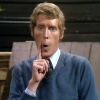
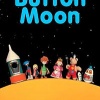
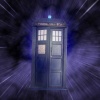
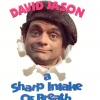
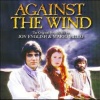
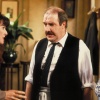
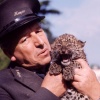
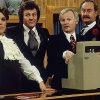
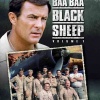
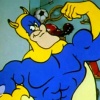
Do You Remember The Test Card?
Do You Remember The Test Card?